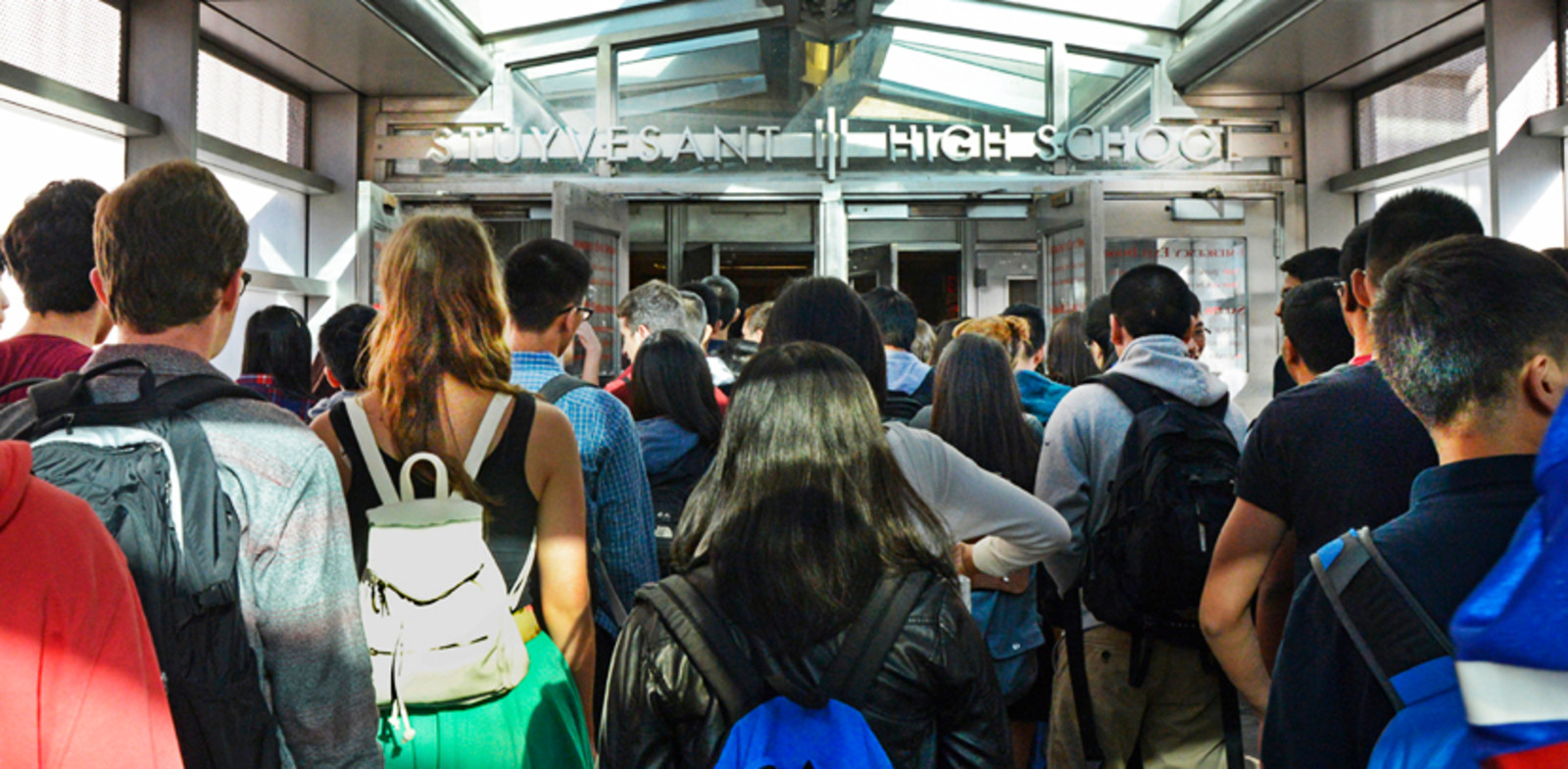The flawed specialized high school system - and ways to fix it

Mayor Bill de Blasio faces an uphill battle in Albany in his quest to get rid of the admissions test for elite high schools including Stuyvesant and Bronx High School of Science, but there’s a lot he can do now to advance his Administration’s stated goal of increasing opportunities for talented black and Latino kids—without the approval of the State Legislature.
Without changing the State law that governs admission to the eight specialized high schools, the City can dramatically expand a special summer school initiative known as the Discovery Program, increase the number of seats overall at the specialized high schools, and work to make these schools more welcoming to blacks and Latinos. Just as important, it can strengthen the academic programs at the high schools that serve 95 percent of the city’s students—and whose admissions are controlled by the City, not the State.
To its credit, City Hall this week pledged to expand the Discovery Program from what it is now, 200 students, to 800 students over the next two years. This program identifies disadvantaged middle school kids who just missed the cutoff on the Specialized High School Admission Test (SHSAT); it offers them summer school and, if they are successful, a spot in the specialized schools.
In the past, for the purposes of joining the Discovery Program students have been considered “disadvantaged” if they are poor enough to qualify for free lunch (or if they are in foster care or have been in the country for less than four years). But the fact is that students who attend low-performing, high-poverty schools are likely to be at more of a disadvantage than low-income children at high-performing schools. That’s why it’s significant that the City is changing its eligibility for the Discovery Program to admit kids who attend high-poverty schools, rather than students whose families are low-income.
With this newly expanded enrollment, most students admitted to the Discovery Program would be black and Latino; historically, about two-thirds have been Asian. The City estimates that its changes in the Discovery Program would increase the proportion of black and Latino students in the specialized high schools, currently 9 percent, to 16 percent – a significant, increase, even if it's well below the 70 percent these groups represent in the total school population.
Expanding total enrollment for the specialized high schools is another way to increase opportunities for all. While the so called “big three” — Stuyvesant, Bronx Science and Brooklyn Technical High School — have gigantic enrollments of 3,000 to 5,800 students in overcrowded buildings, enrollments at three specialized schools on the City University of New York (CUNY) college campuses are under 500 students. Administrators at one of these, Queens High School for the Sciences at York College, have expressed an interest in expanding.
Increasing the number of seats overall would keep this from being a zero-sum game with winners and losers—and avoid pitting low-income blacks and Latinos against low-income Asians, who now make up a large proportion of the enrollment at the specialized schools.
At the same time, the City should look into why so many high-achieving black and Latino students don’t wind up at the specialized schools, why hundreds of such students with high scores on State standardized tests don’t sit for the SHSAT, and why more than one-quarter of those who are offered seats don’t accept. Richard Buery, a former deputy mayor, described his sense of isolation as one of the few black students at Stuyvesant High School in the 1980s.
His experience is not unique. The City should look into ways to make the environment of these schools more inclusive, as some other selective schools have done. For example Manhattan/Hunter High School in the Martin Luther King Campus on the Upper West Side, one of the most sought-after schools in the city, has a culture where everyone feels valued; nearly half the students are black and Latino and nearly 15 percent have disabilities.
The under-representation of black and Latino students at the specialized high schools is a powerful symbol of the inequities in the city’s school system. The SHSAT has many flaws, and the mania for test prep that has sprung up around it hurts all children. But the city must not pin its hopes on a State Legislature that has shown little appetite for change. Instead, it should take the steps that are within its power and not merely blame Albany for inaction.
[Note: A slightly revised version of this op-ed was published in the New York Daily News.]
Please Post Comments